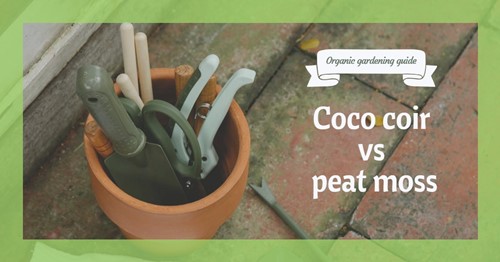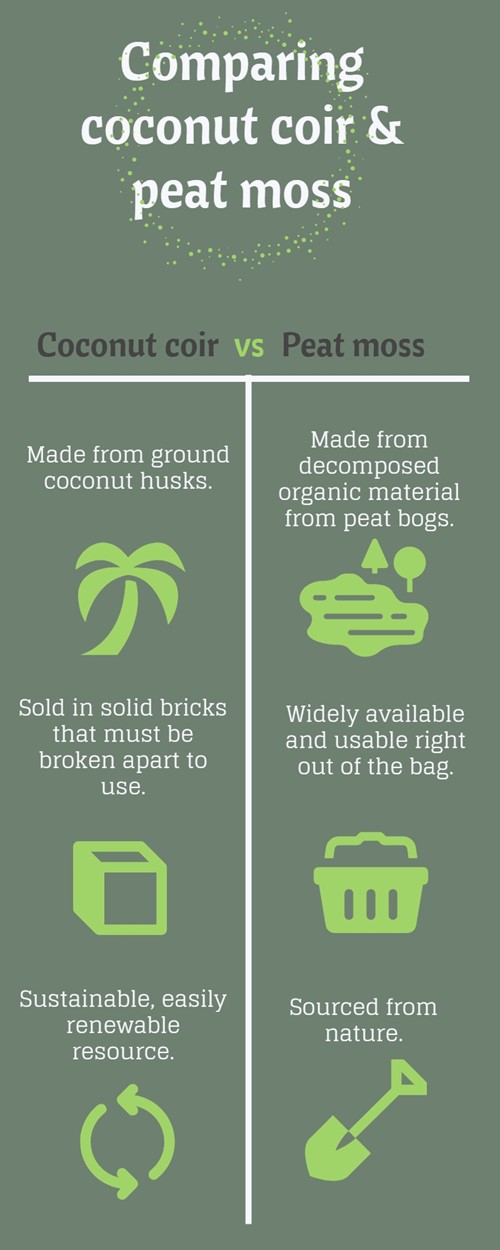
If you’re a gardening or houseplant enthusiast, you may have already pondered the choice of coconut coir vs peat moss. Your choice of growing medium can make an enormous difference in the health and success of your plants, so it’s important to understand the benefits and disadvantages of each option.
Coconut coir, also called coco coir or coco peat, is made from the leftovers of coconut processing. The coconut husk fiber is broken down into a light but chunky texture perfect for adding to soil. It’s usually sold in bricks and must be broken apart before you can use it as an amendment in potting soil.
Peat moss comes from the decomposed remains of sphagnum moss and other organic matter found in peat bogs. It’s been a popular potting soil amendment for over a century because of its ability to hold on to moisture and nutrients. Peat moss is widely available and usable right out of the bag or container.
Peat moss is more acidic than coco coir, making it perfect for plants that love highly acidic soil. However, coco coir’s neutral pH range makes it more suitable for a wider variety of plants. Both materials are extremely efficient for absorbing and holding on to moisture, but coir has a tendency to dry out more quickly than moss.
One point of controversy when deciding between the two is sustainability. Peat moss is harvested from nature and can take decades to replenish itself. Coco coir, by contrast, is a waste product of coconut processing. Coconut trees are plentiful and quick-growing, making coir an easily renewable resource.

Ultimately, the decision between coconut coir and peat moss is up to the individual gardener. However, if you’re interested in sustainable gardening practices, ecologists recommend using coco coir as a soil conditioner instead of peat moss to help preserve a quickly diminishing resource.
